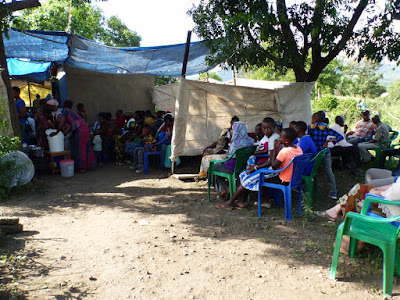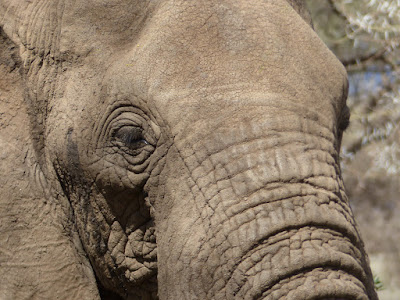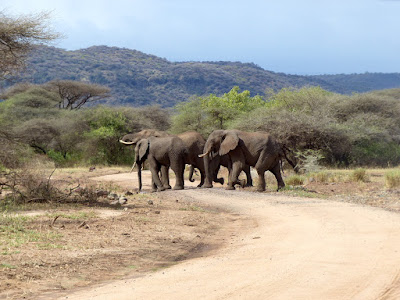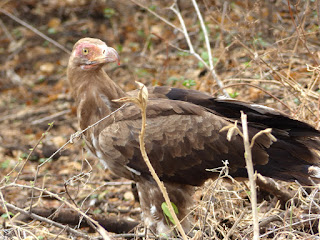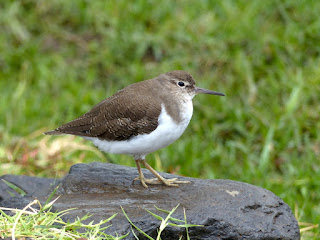 |
Herry, a local Biogass consultant and Harold Msanya, my office mate at ECHO,
using a filled portable biogas bag to cook rice. |
I haven't said a lot about work for a while so this blog will be mostly related to my day job. I have spent a lot of my time so far writing project funding applications. These vary from a few thousand dollars to hundreds of thousands and from a few months to four years duration. So far I've had one hit and three misses. The hit was a $10,000 grant from the Australian Government - a Community Grants Scheme which is administered by Australian Volunteers for International Development. In this case my colleague Harold Msanya wrote the application with some advice and minor editing from me. I will get him to write all proposals from now on! Coincidentally, Jenny's organisation also received one of these grants (and she did all the work). Tanzania was the only country which received more than one grant and ours were the only successful grant applications in Tanzania.
It is disappointing to put in weeks of work to prepare a proposal for submission and then have it miss at the first cut but the schemes are heavily subscribed and the odds of success are small. All we can do is keep trying. I have a small application nearly ready to submit on Tuesday and more concepts in the pipeline for the future.
 |
| Methane bubbling away nicely |
 |
| Output from a digester heading straight into the fruit and veggie garden. |
 |
| No labour required. Cow manure straight into the digester. |
 |
| A small biogas digester for a household. |
 |
| A typical kitchen burner - so much cleaner and healthier than using charcoal. |
We have been busy with two biogas projects recently. Biogas is methane produced in a digester chamber into which is fed animal (inc. human) manure, food scraps, garden clippings etc. The slurry that emerges is excellent fertiliser. The methane produced is used for domestic cooking mainly but can also be used for lighting, heating and egg incubating. We are evaluating portable gas bags that can be filled with excess methane from a digester and then sold to neighbours for use in their kitchens. This will hopefully replace some of the charcoal that is widely used and is unsustainable produced from forests. The technology works well but we are still unsure of the economics. As well as evaluating the portable bags we have run a 10-day training program with a group of young entrepreneurs wishing to be biogas digester installers.
 |
ECHO colleague Charles Bonaventure (Bonny) is a real people person.
Here spreading the word about nutritious leafy greens. |
 |
| Isabel Galeano and Herry with keen biogas entrepreneurs in training. |
ECHO is active in running local and international conferences and later this month we are hosting the East Africa Symposium on Best Practices of Improving Nutrition and Sustainable Agriculture in Highland Areas. It will be held over three days in Kigali, the capital of Rwanda and I've been asked to attend and give a talk on the potential of incorporating endophytes into everyday crop species. I've never been to Rwanda before so it should be fun. Apparently we are driving there and back so it will be interesting to see lots of new country in Tanzania as well. It is a looong way from here though.
Recently Jenny and I attended an ECHO weekend workshop on invasive weeds recently. The worst weed in the Arusha district is
Parthenium hysterophorus (Carrot weed). It is an annual daisy bush from central America and has invaded many tropical and sub-tropical countries around the world. It is resistant to common herbicides, produces foliage which is toxic to livestock and highly irritating to humans who contact it. It produces chemicals from its roots to suppress other plant species nearby and is a prolific seeder. Seed can remain viable in the soil for at least 20 years. If you were designing the perfect weed it would have these characteristics.
 |
| Parthenium taking over a roadside in Hawaii. Could easily be Arusha. (Photo from Wikipedia) |
Biological control is the only solution once it is established but it is easy to pull out when it is first noticed in a new location (as long as you are wearing rubber gloves). The Tanzanian government has released some biological control organisms and is evaluating others but they are not having a huge impact yet. ECHO is keen to educate farmers and others outside its current range to identify and remove plants before they can become established. It was great to see many farmers from outside Arusha along with government research and extension staff at the workshop. Disappointing that many of the NGOs we invited did not send staff however.
We have had a visit from Zoe, the National Program Manager for AVID and our regional director Colin who is based in Sri Lanka. Time permitted them to only visit a couple of workplaces and Jenny's was one on Friday. I tagged along to take some photos as ECHO is just down the road. On Saturday all Arusha AVID volunteers joined Zoe, Colin and our in-country management team of Musa and Lizzie for a meeting and a sumptuous lunch at a nice big hotel in town. It was fascinating to hear all the stories, successes, frustrations etc from our colleagues and to get Zoe's and Colin's input on the program from a management perspective.
 |
| Jenny with Zoe - AVID National Program Manager. |
 |
| Jenny's boss, Father Pat, making a point with Colin - AVID Regional Director. |
On Wednesday at work we had a visit from 5 government officials from the Ministry of Community Development, Health and Children. They enquired into all aspects of ECHO and were particularly interested in the documents of the non-Tanzanian staff. We hopefully satisfied them that we were all legitimate. It was all rather unpleasant.
Birding has been relatively quiet of late but there have been some highlights. I went out with English friend Alex and two Tanzanian friends James and Abdul to the Maasai Steppe region south east of Arusha. We birded some acacia woodland and then wandered around the shore of Shambarai Swamp for over 80 species. The only new one for me was Tsavo Sunbird but a few others were new for my Tanzania list. Lots of waders and other waterbirds. Many bush birds were also seen coming in to drink.
 |
| Mourning Collared Dove |
 |
| Grey-headed Silverbill |
 |
| Yellow-billed Stork |
 |
| Fork-tailed Drongo |
 |
| African Spoonbill |
 |
| Cut-throat Finch |
There is a Weaver colony at Jenny's workplace front gate and I finally stopped to check them out a few days ago. Lifer! Speke's Weaver. Not uncommon in these parts apparently but I hadn't bumped into them before. We have had tantalising views of a skulking, greyish, thrush-sized bird along the laneway outside our gate. I think it is probably a Common Nightingale recently arrived from Europe. A mystery for now!
 |
| Speke's Weaver |
This morning I heard loud wingbeats wooshing over the house and I went out to try to photograph the expected Silvery-cheeked Hornbill. It turned out to be a Trumpeter Hornbill. This species is found along the coast and in forests further east than here so was a bit of a surprise. Landlord Paul says he has not seen one in the area before. I've only seen them once before - in the hills behind Dar es Salaam in 2011.
 |
| Trumpeter Hornbill |
Time for a bird tally update:
Lifelist: 2313
Tanzania list: 587
Lifers this trip: 29
Total this trip: 371







